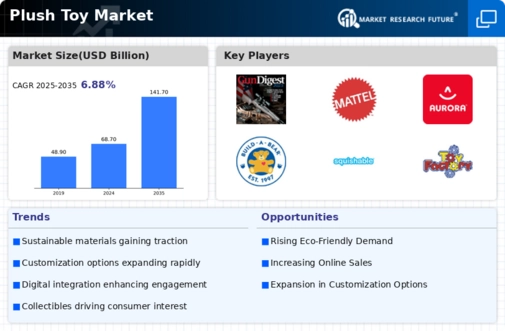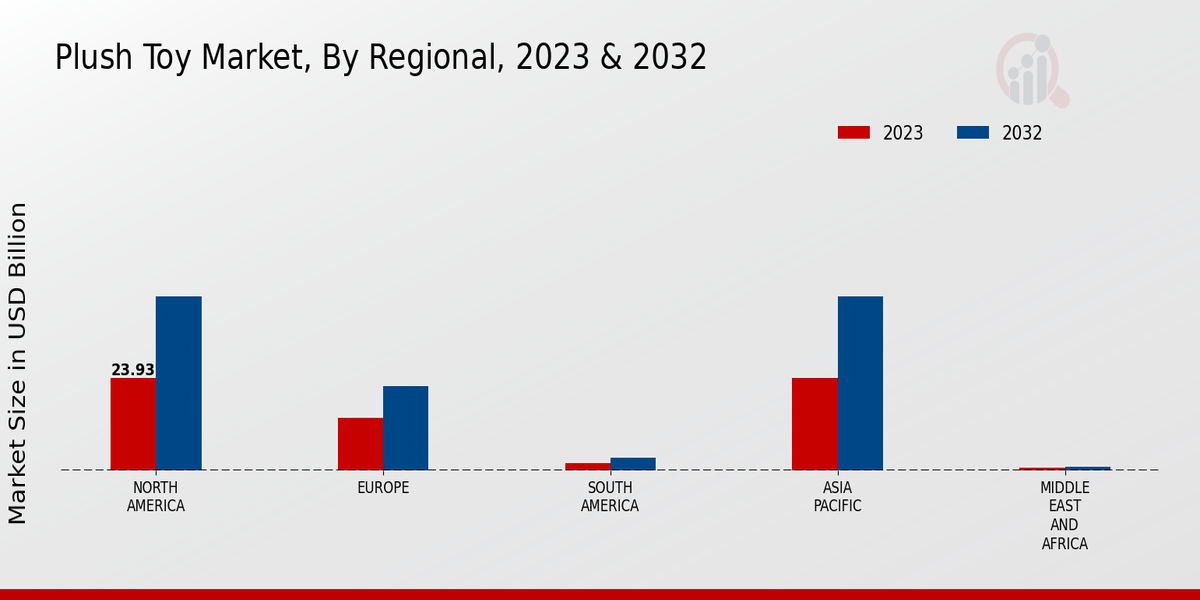Market Growth Projections
Expansion of E-Commerce Platforms
The Global Plush Toy Market Industry is significantly influenced by the rapid expansion of e-commerce platforms. Online shopping provides consumers with unparalleled convenience and access to a wider variety of plush toys than traditional retail channels. This shift has been accelerated by advancements in technology and logistics, allowing for faster delivery and improved customer experiences. As a result, e-commerce sales of plush toys are expected to grow substantially, contributing to the overall market growth. The ease of online purchasing is likely to attract new consumers, further expanding the market's reach and potentially increasing its value to 141.7 USD Billion by 2035.
Rising Demand for Eco-Friendly Toys
The Global Plush Toy Market Industry experiences a notable shift towards eco-friendly products, driven by increasing consumer awareness regarding sustainability. As parents become more conscious of the environmental impact of toys, there is a growing preference for plush toys made from organic and recycled materials. This trend aligns with the broader movement towards sustainable consumerism, which is expected to propel the market's growth. In 2024, the market is projected to reach 68.7 USD Billion, reflecting the rising demand for environmentally responsible products. Companies that adapt to this trend may find themselves well-positioned to capture a significant share of the market.
Influence of Social Media and Influencers
The Global Plush Toy Market Industry is increasingly shaped by the influence of social media and online influencers. Platforms such as Instagram and TikTok serve as powerful marketing tools, where influencers showcase plush toys to their followers, often leading to viral trends. This exposure can significantly impact consumer purchasing decisions, particularly among younger demographics who are highly engaged with social media. As influencers promote specific plush toys, they create a sense of urgency and desirability, driving sales and expanding brand visibility. The ongoing integration of social media marketing strategies is likely to play a crucial role in the market's growth trajectory.
Diverse Product Offerings and Customization
The Global Plush Toy Market Industry benefits from a diverse range of product offerings, including customizable plush toys that cater to individual preferences. Companies are increasingly providing options for personalization, allowing consumers to create unique products that resonate with their personal stories or gifts for loved ones. This trend not only enhances consumer engagement but also fosters brand loyalty. The ability to customize plush toys can lead to higher price points and increased margins for manufacturers. As the market evolves, the demand for unique and personalized plush toys is expected to drive growth, contributing to the overall expansion of the industry.
Growing Popularity of Collectible Plush Toys
The Global Plush Toy Market Industry is witnessing a surge in the popularity of collectible plush toys, which appeals to both children and adult collectors. Limited edition releases and collaborations with popular franchises create a sense of exclusivity and desirability. This trend is particularly evident in the rise of plush toys based on popular media, such as movies and video games, which often drive consumer interest. The collectible aspect not only enhances the emotional connection consumers have with these products but also encourages repeat purchases. This phenomenon is likely to contribute to a compound annual growth rate of 6.81% from 2025 to 2035, further bolstering the market.























